Pompeii exhibition opens in central China's Hunan
Source: Xinhua
Editor: huaxia
2025-07-08 17:53:30
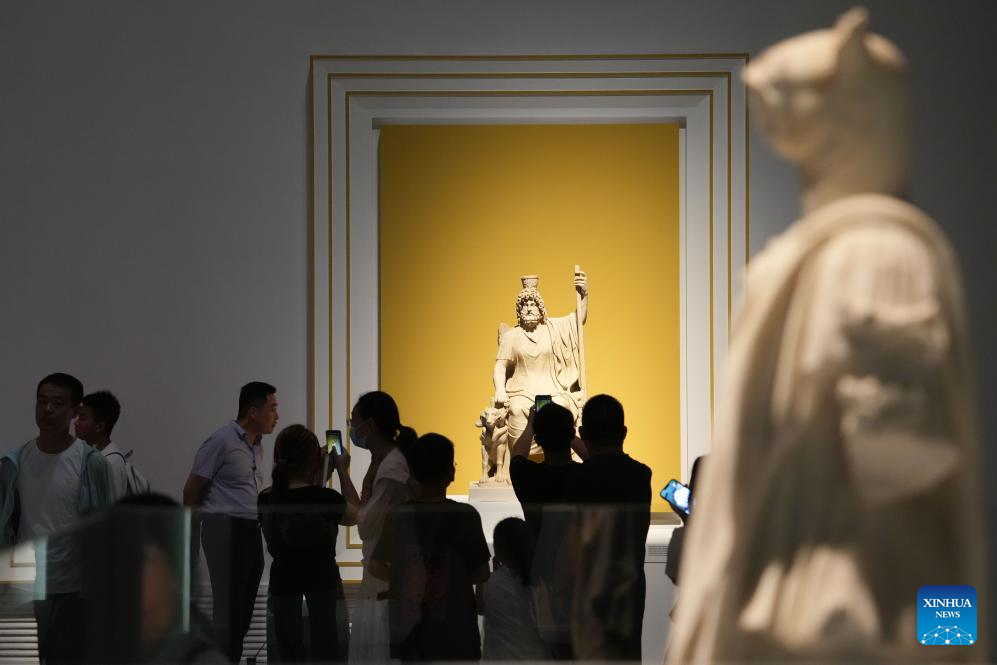
People visit the exhibition "Meet Pompeii: The Eternal City" at the Hunan Museum in Changsha, capital of central China's Hunan Province, July 8, 2025. This exhibition showcasing cultural relics from ancient Pompeii opened here on Tuesday. It features more than 130 artifacts, including frescoes, sculptures, and bronze and gold ware, and will run through November 2 this year. Pompeii, situated between Naples and the Amalfi Coast, is a UNESCO World Heritage Site. The ancient city was buried under volcanic ash and pumice during the catastrophic eruption of Mount Vesuvius in the year 79. (Xinhua/Xue Yuge)
CHANGSHA, July 8 (Xinhua) -- An exhibition showcasing cultural relics from ancient Pompeii opened Tuesday at the Hunan Museum in Changsha, capital of central China's Hunan Province.
The exhibition, titled "Meet Pompeii: The Eternal City," features more than 130 artifacts, including frescoes, sculptures, and bronze and gold ware.
The statue of Venus, the patron goddess of Pompeii, serves as the representative piece of the exhibition, according to Amelia Menna, an archaeologist with the National Archaeological Museum of Naples, which was among the partners that organized the exhibition with the Hunan Museum.
Noting that the Roman Empire and ancient China were both important centers of civilization, Menna said the exhibition marks another important contemporary exchange between the two civilizations.
"It is part of our efforts to introduce major ancient civilizations to the public as we work toward building the Hunan Museum into a world-class institution," said Shu Lili, curator of the exhibition who works for the museum.
For local visitors, the exhibition offers a rare opportunity to view Pompeian relics without traveling overseas. "It's my first time seeing an exhibition about Pompeii. It feels like I've saved a plane ticket to Italy," said Ma Dongyi, a student who visited the exhibition.
The exhibition will run through November 2 this year.
Pompeii, situated between Naples and the Amalfi Coast, is a UNESCO World Heritage Site. The ancient city was buried under volcanic ash and pumice during the catastrophic eruption of Mount Vesuvius in the year 79. ■
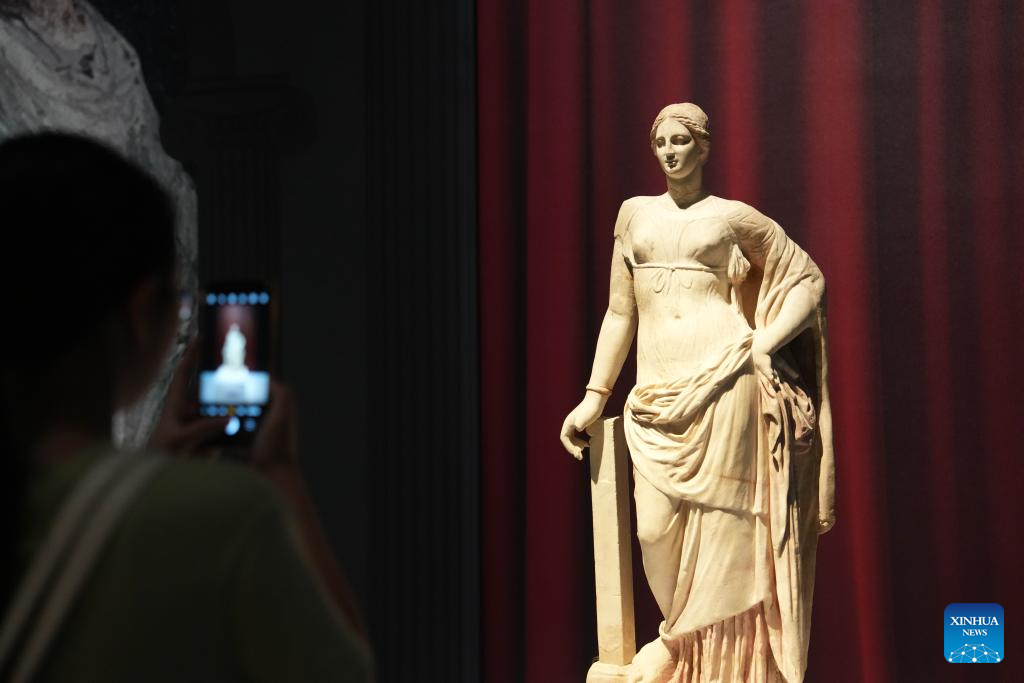
This photo shows the statue of Venus, the patron goddess of Pompeii, at the exhibition "Meet Pompeii: The Eternal City" at the Hunan Museum in Changsha, capital of central China's Hunan Province, July 8, 2025. This exhibition showcasing cultural relics from ancient Pompeii opened here on Tuesday.
It features more than 130 artifacts, including frescoes, sculptures, and bronze and gold ware, and will run through November 2 this year.
Pompeii, situated between Naples and the Amalfi Coast, is a UNESCO World Heritage Site. The ancient city was buried under volcanic ash and pumice during the catastrophic eruption of Mount Vesuvius in the year 79. (Xinhua/Xue Yuge)

A visitor visits the exhibition "Meet Pompeii: The Eternal City" at the Hunan Museum in Changsha, capital of central China's Hunan Province, July 8, 2025. This exhibition showcasing cultural relics from ancient Pompeii opened here on Tuesday.
It features more than 130 artifacts, including frescoes, sculptures, and bronze and gold ware, and will run through November 2 this year.
Pompeii, situated between Naples and the Amalfi Coast, is a UNESCO World Heritage Site. The ancient city was buried under volcanic ash and pumice during the catastrophic eruption of Mount Vesuvius in the year 79. (Xinhua/Xue Yuge)
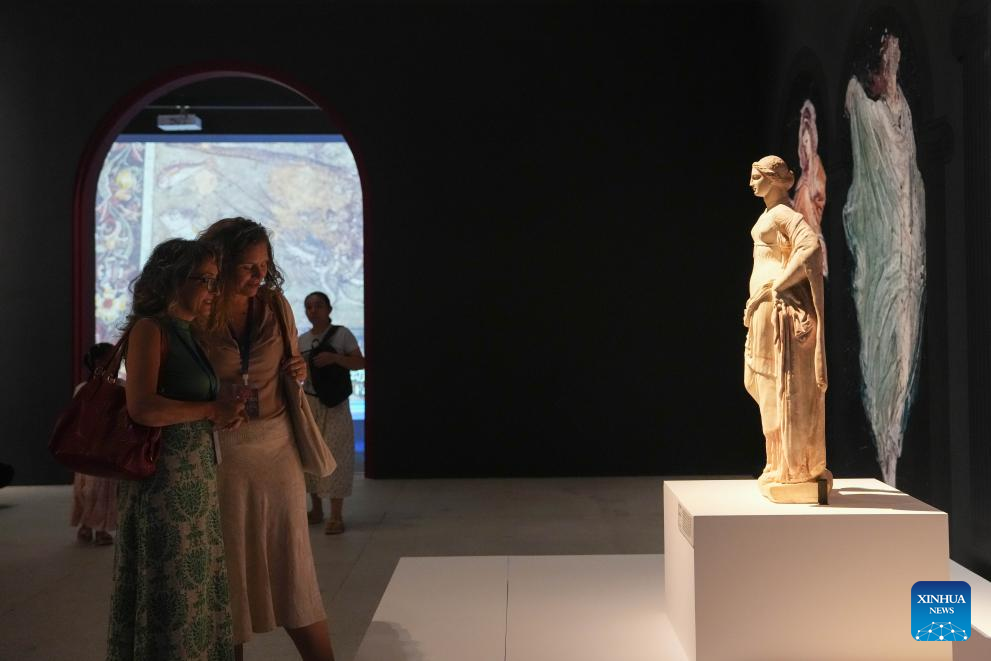
People visit the exhibition "Meet Pompeii: The Eternal City" at the Hunan Museum in Changsha, capital of central China's Hunan Province, July 8, 2025. This exhibition showcasing cultural relics from ancient Pompeii opened here on Tuesday.
It features more than 130 artifacts, including frescoes, sculptures, and bronze and gold ware, and will run through November 2 this year.
Pompeii, situated between Naples and the Amalfi Coast, is a UNESCO World Heritage Site. The ancient city was buried under volcanic ash and pumice during the catastrophic eruption of Mount Vesuvius in the year 79. (Xinhua/Xue Yuge)
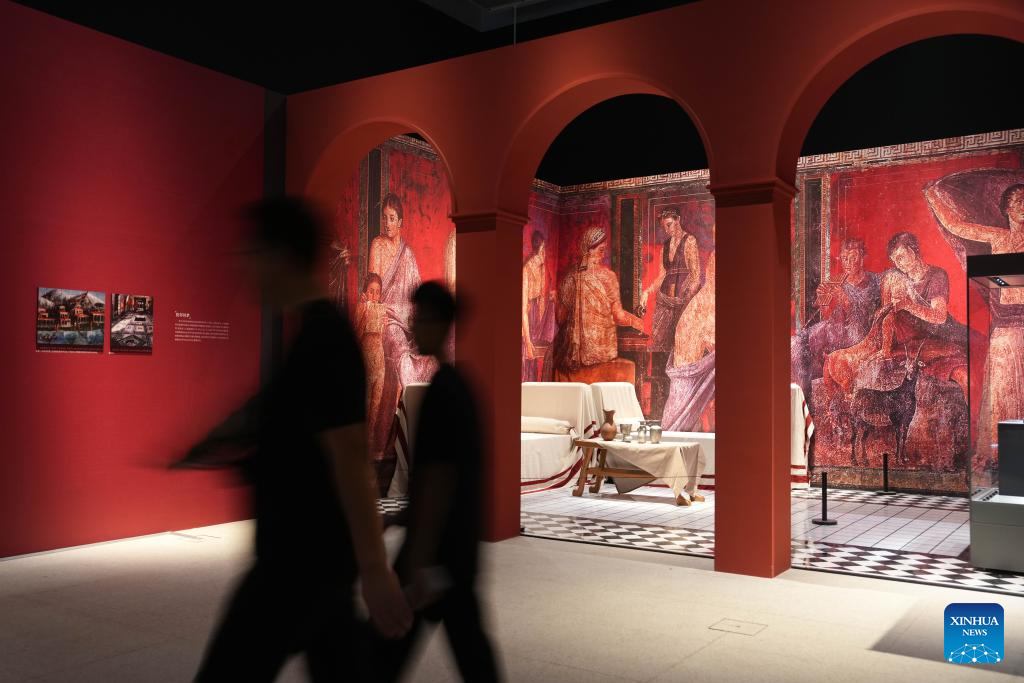
People visit the exhibition "Meet Pompeii: The Eternal City" at the Hunan Museum in Changsha, capital of central China's Hunan Province, July 8, 2025. This exhibition showcasing cultural relics from ancient Pompeii opened here on Tuesday.
It features more than 130 artifacts, including frescoes, sculptures, and bronze and gold ware, and will run through November 2 this year.
Pompeii, situated between Naples and the Amalfi Coast, is a UNESCO World Heritage Site. The ancient city was buried under volcanic ash and pumice during the catastrophic eruption of Mount Vesuvius in the year 79. (Xinhua/Xue Yuge)
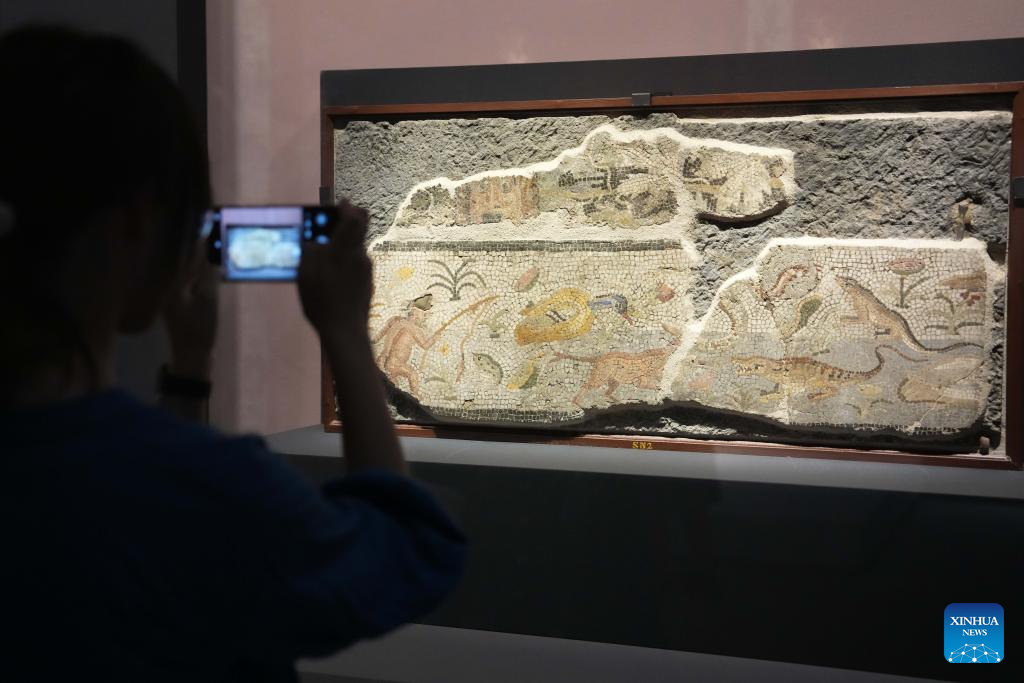
A visitor takes photos at the exhibition "Meet Pompeii: The Eternal City" at the Hunan Museum in Changsha, capital of central China's Hunan Province, July 8, 2025. This exhibition showcasing cultural relics from ancient Pompeii opened here on Tuesday.
It features more than 130 artifacts, including frescoes, sculptures, and bronze and gold ware, and will run through November 2 this year.
Pompeii, situated between Naples and the Amalfi Coast, is a UNESCO World Heritage Site. The ancient city was buried under volcanic ash and pumice during the catastrophic eruption of Mount Vesuvius in the year 79. (Xinhua/Xue Yuge)
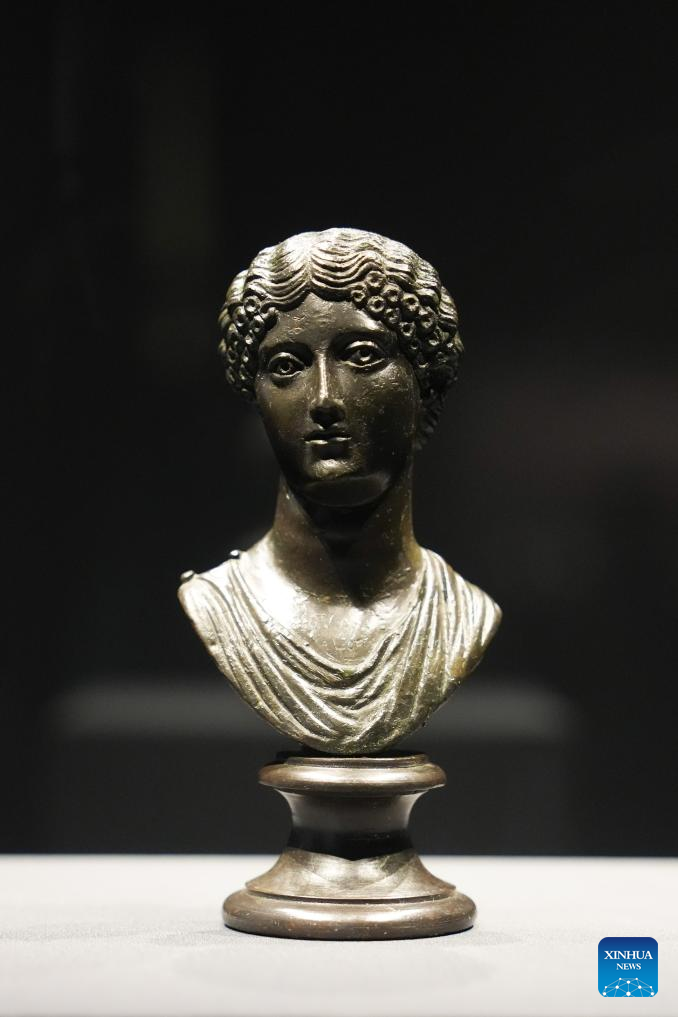
This photo shows an exhibit at the exhibition "Meet Pompeii: The Eternal City" at the Hunan Museum in Changsha, capital of central China's Hunan Province, July 8, 2025. This exhibition showcasing cultural relics from ancient Pompeii opened here on Tuesday.
It features more than 130 artifacts, including frescoes, sculptures, and bronze and gold ware, and will run through November 2 this year.
Pompeii, situated between Naples and the Amalfi Coast, is a UNESCO World Heritage Site. The ancient city was buried under volcanic ash and pumice during the catastrophic eruption of Mount Vesuvius in the year 79. (Xinhua/Xue Yuge)
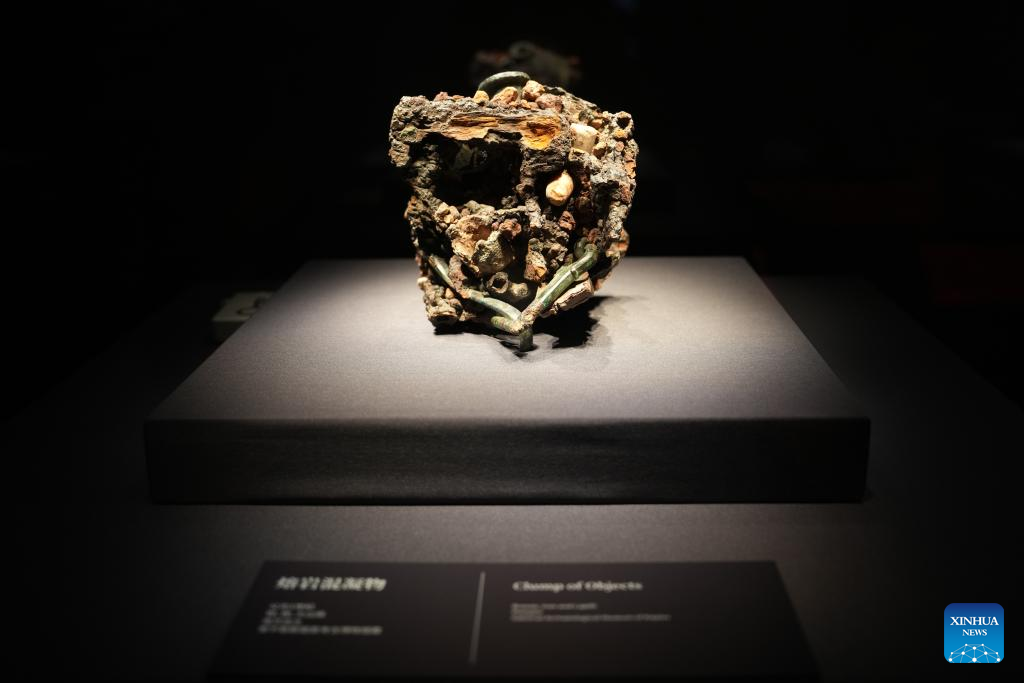
This photo shows an exhibit at the exhibition "Meet Pompeii: The Eternal City" at the Hunan Museum in Changsha, capital of central China's Hunan Province, July 8, 2025. This exhibition showcasing cultural relics from ancient Pompeii opened here on Tuesday.
It features more than 130 artifacts, including frescoes, sculptures, and bronze and gold ware, and will run through November 2 this year.
Pompeii, situated between Naples and the Amalfi Coast, is a UNESCO World Heritage Site. The ancient city was buried under volcanic ash and pumice during the catastrophic eruption of Mount Vesuvius in the year 79. (Xinhua/Xue Yuge)
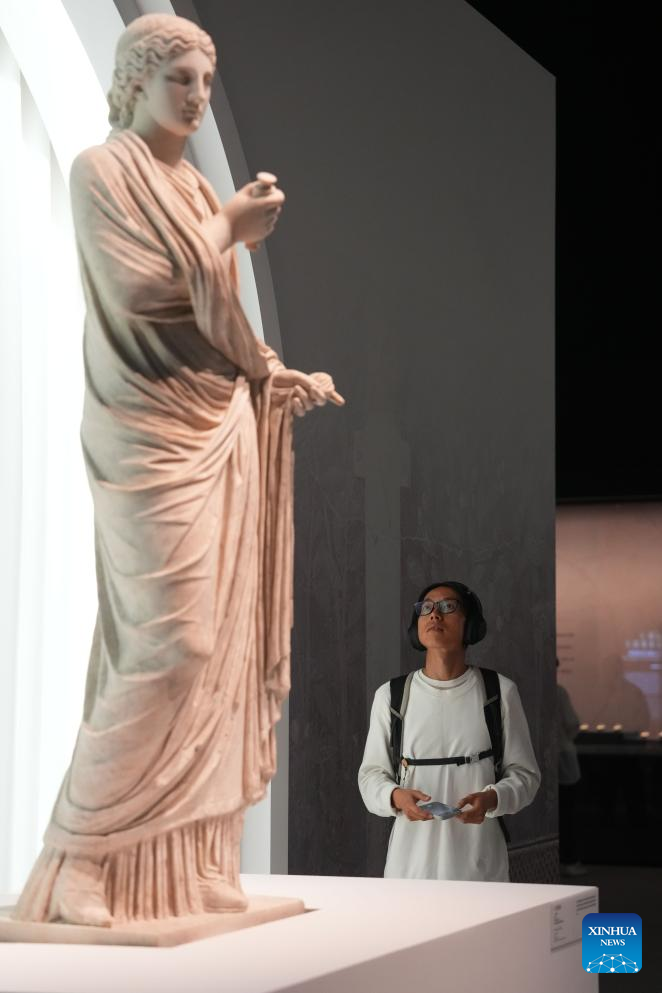
A visitor visits the exhibition "Meet Pompeii: The Eternal City" at the Hunan Museum in Changsha, capital of central China's Hunan Province, July 8, 2025. This exhibition showcasing cultural relics from ancient Pompeii opened here on Tuesday.
It features more than 130 artifacts, including frescoes, sculptures, and bronze and gold ware, and will run through November 2 this year.
Pompeii, situated between Naples and the Amalfi Coast, is a UNESCO World Heritage Site. The ancient city was buried under volcanic ash and pumice during the catastrophic eruption of Mount Vesuvius in the year 79. (Xinhua/Xue Yuge)

A visitor visits the exhibition "Meet Pompeii: The Eternal City" at the Hunan Museum in Changsha, capital of central China's Hunan Province, July 8, 2025. This exhibition showcasing cultural relics from ancient Pompeii opened here on Tuesday.
It features more than 130 artifacts, including frescoes, sculptures, and bronze and gold ware, and will run through November 2 this year.
Pompeii, situated between Naples and the Amalfi Coast, is a UNESCO World Heritage Site. The ancient city was buried under volcanic ash and pumice during the catastrophic eruption of Mount Vesuvius in the year 79. (Xinhua/Xue Yuge)



